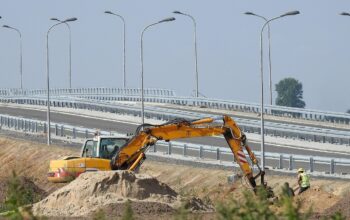Productivity in 2025 isn’t just about doing more in less time—it’s about who we are at work, and how work is being reimagined. Across the globe, companies are making bold moves, leveraging technology, and experimenting with new rules. These aren’t just theories; they’re real stories reshaping the daily grind for millions.
Modular content organization was key for us in piecing together what’s really moving the needle in the productivity world.
Hybrid Work Is the New Default Forget the all-or-nothing debate: by 2025, hybrid work is where most people land. Companies are finding that a combo of office and home is the sweet spot—boosting both morale and output. Employees get flexible schedules, fewer commutes, and just enough face-to-face time to keep ideas fresh. It’s not always easy to balance, but it’s proving to be the best strategy for keeping teams connected, creative, and productive.
AI and Automation Everywhere Step under the hood of almost any modern workplace, and you’ll find a lot more artificial intelligence. Tools that schedule, summarize, and even suggest next steps are now common. Instead of replacing jobs, these smart helpers are freeing people up to tackle bigger, more creative tasks. Imagine having a personal assistant who never sleeps—that’s what AI tools are delivering for teams, from startups to multinationals.
Return to the Office, But with a Twist While flexibility is still king, some companies are pulling back their in-office schedules. In fact, as many as 41% of employees now spend more time at the office than a year ago—often because of new company policies. But this isn’t a full retreat. Offices are being redesigned to be magnets for inspiration, not just places to clock in. Think less cubicle farm, more vibrant community hub.
Employee Engagement Takes a Hit Here’s a curveball: despite all the tech and flexibility, engagement is actually slipping. Gallup’s latest report shows both engagement and wellbeing dropped in 2024, costing the global economy a whopping $438 billion in lost productivity. The biggest drops? Managers under 35 and female managers. This is a wake-up call for leaders: productivity needs more than just gadgets and flexibility—it needs better management and real support.
Smart Office Spaces and Agent Bosses Forward-looking firms are redesigning offices with an eye on the future, using data to fine-tune the mix of virtual and physical space. There’s a growing buzz about “agent bosses”—employees who delegate routine work to AI agents, focusing instead on big-picture projects. This blend of tech and human smarts is unlocking new kinds of productivity, especially for knowledge workers.
So, what’s next? Productivity in 2025 is a balancing act: keeping people engaged, smart about tech, and inspired by great workspaces. The winners won’t just be the fastest or the smartest, but the most adaptable.
References:
- https://economy-finance.ec.europa.eu/economic-forecast-and-surveys/economic-forecasts/spring-2025-economic-forecast-moderate-growth-amid-global-economic-uncertainty_en
- https://www.splashtop.com/blog/remote-work-trends-2025
- https://www.michaelpage.com/advice/management-advice/attraction-and-recruitment/workplace-trends-defining-2025-and-their-impact
- https://www.jll.com/en-us/webinars/rethink-space-cre-trends-driving-smarter-workplaces-in-2025
- https://www.inspiring-workplaces.com/content/global-employee-engagement-falls-again-what-can-help-reverse-this-trend
- https://jack-clark.net
- https://futureworkseries.com/future-of-work-usa-2025
- https://www.gatesnotes.com/books/reading-lists/reader/summer-books-2025



